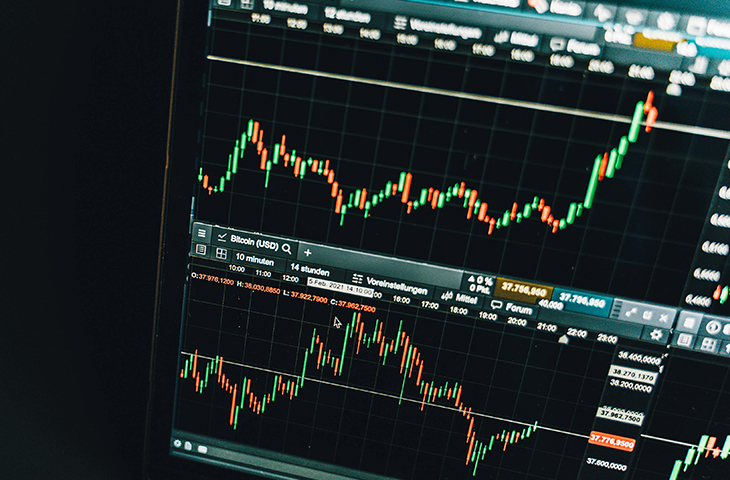1 Vanguard Index Fund To Buy To Beat The S&p 500 In 2025, According To A Wall Street Bank

Jefferies analysts have set the S&P 500 (SNPINDEX: ^GSPC) with a 2025 target of 6,000. That forecast implies about 1% downside from its current level of 6,050, which ranks among the most bearish outlooks on Wall Street. But analysts at the investment bank do see upside in one corner of the stock market: small-cap companies.
Indeed, Jefferies expects the Russell 2000 -- a benchmark for small-cap stocks -- to reach 2,715 by the end of 2025. That forecast implies about 16% upside from its current level of 2,345. And analysts at the investment bank are not alone in their bullish outlook. Tom Lee at Fundstrat Global Advisors believes the Russell 2000 will at least double the return of the S&P 500 in the next few years.
Investors can get exposure to that potential upside with the Vanguard Russell 2000 ETF (NASDAQ: VTWO). Read on to learn more.
The Vanguard Russell 2000 ETF provides exposure to small-cap stocks
The Russell 2000 tracks the performance of roughly 2,000 small-cap companies, which collectively represent about 5% of all U.S. equities by market value. The median market capitalization is $1 billion, which means half of the constituent companies are worth more, and the other half are worth less. No Russell 2000 company is worth more than $18 billion.
The Vanguard Russell 2000 ETF tracks the performance of the Russell 2000. The index fund includes value stocks and growth stocks from all 11 stock market sectors, though it is most heavily weighted toward three sectors: industrials (20%), financials (18%), and healthcare (16%).
The five largest positions in the Vanguard Russell 2000 ETF are listed by weight below:
- FTAI Aviation: 0.5%
- Sprouts Farmers Market: 0.5%
- Vaxcyte: 0.5%
- Insmed: 0.4%
- Mueller Industries: 0.3%
The bull case: Small-cap stocks have potential catalysts in interest rate cuts and strong earnings growth
There are three reasons to think small-cap stocks could outperform large-cap stocks in 2025. First, interest rate cuts tend to benefit small-cap companies to a greater degree because they usually have more floating-rate debt, meaning their interest payments get smaller and profit margins get larger as interest rates decline.
Second, the Russell 2000 trades at a 26% premium to its average price-to-earnings (PE) ratio over the last two decades. But the S&P 500 trades at a 41% premium to its average PE ratio over the same period, according to JPMorgan Chase. In other words, small-cap stocks are cheaper than large-cap stocks relative to their average PE multiple over the last 20 years.
Third, Russell 2000 companies in aggregate are expected to report earnings growth of 41% in 2025. But S&P 500 companies are expected to report earnings growth of 15% next year. The fact that small-cap companies are forecast to grow earnings faster next year, coupled with cheaper relative valuations, could lead to outperformance.
The bear case: Small-cap stocks have dramatically underperformed large-cap stocks in recent history
Financially speaking, small-cap companies tend to be weaker than large-cap companies. For instance, fewer than 10% of S&P 500 companies are currently unprofitable, but more than 40% of Russell 2000 companies are unprofitable, according to JPMorgan Chase.
Additionally, small-cap stocks have performed far worse than large-cap stocks in recent history, as detailed in the chart below.
|
Time Period |
Russell 2000 Return |
S&P 500 Return |
|---|---|---|
|
1 Year |
19% |
30% |
|
3 Years |
14% |
37% |
|
5 Years |
53% |
107% |
|
10 Years |
134% |
262% |
Data source: YCharts.
Here is the bottom line: I think small-cap stocks could outperform large-cap stocks next year, and that may carry into future years. Historically, the Russell 2000 has outperformed the S&P 500 by an average of 12 percentage points during the 12-month period following the end of a rate-cut cycle, according to Goldman Sachs. The Vanguard Russell 2000 ETF is an easy way to get exposure to that trend.
However, the financial strength of the S&P 500, coupled with its long-term outperformance, gives me pause. Personally, I already have a relatively large percentage of my portfolio in the Vanguard S&P 500 ETF. I have no plans to change that. I may start a position in the Vanguard Russell 2000 ETF, but it would be a much smaller position.
Should you invest $1,000 in Vanguard Russell 2000 ETF right now?
Before you buy stock in Vanguard Russell 2000 ETF, consider this:
The Motley Fool Stock Advisor analyst team just identified what they believe are the 10 best stocks for investors to buy now… and Vanguard Russell 2000 ETF wasn’t one of them. The 10 stocks that made the cut could produce monster returns in the coming years.
Consider when Nvidia made this list on April 15, 2005... if you invested $1,000 at the time of our recommendation, you’d have $822,755!*
Stock Advisor provides investors with an easy-to-follow blueprint for success, including guidance on building a portfolio, regular updates from analysts, and two new stock picks each month. The Stock Advisor service has more than quadrupled the return of S&P 500 since 2002*.
*Stock Advisor returns as of December 16, 2024
JPMorgan Chase is an advertising partner of Motley Fool Money. Trevor Jennewine has no position in any of the stocks mentioned. The Motley Fool has positions in and recommends Goldman Sachs Group, JPMorgan Chase, and Jefferies Financial Group. The Motley Fool recommends Sprouts Farmers Market. The Motley Fool has a disclosure policy.


